Malta: Island in the Mediterranean: From Phoenician Malat (“refuge”)
High on the long list historical contributions regarding the ocean-faring Phoenicians, is their ironic invention of the alphabet and spread of it around the ancient world, as their written works have largely been lost to us. Most of what the world knows about them is through their enemies or competitors – the Greeks and Romans. Even contemporary academic historians disregard their ancient critical role as the master mariners on the planet from 3500 BC until their appearance in Greek history around 1300 BC. Even on Malta their Punic preference for island manufacturing and organization of trading goods is not highlighted as a possible source of the mysterious cart ruts which rival the planet’s oldest still standing temples as ancient mysteries.
A 2005 National Geographic study of DNA attempted to prove the genetic relationship between Phoenicians of the colonies of Carthage, Malta, Sardinia Cadiz, Marseilles and others with those of the homeland or the site of ancient Phoenician ports of Byblos and Tyre or in the Phoenician homeland or today’s Lebanon. Using the Y-chromosome, which is carried by the males of a population, Dr. Pierre Zalloua and his team at the American University in Lebanon have found that the Phoenician signature is still carried by 6% of males in populations around the Mediterranean in the area where the Phoenician civilization existed. 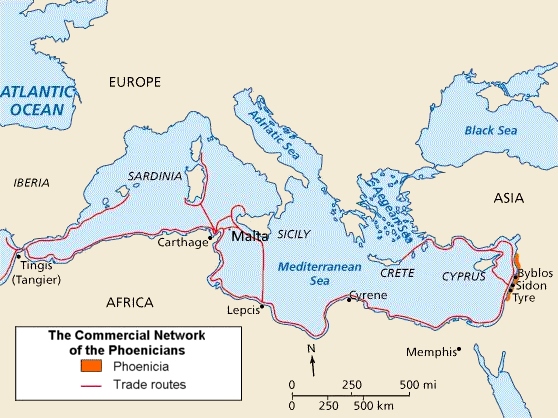 This genetic research is ongoing and intertwined by a Maltese origin story of colonization by nearby Sicilian farmers as well as newly discovered genome markers which show differences between Carthage and Lebanon genetic populations. Significantly, Zalloua’s work shows that the bulk of genetic differentiation in Lebanon appears to have occurred before the rise of the religions that now mark the divisions within countries.
This genetic research is ongoing and intertwined by a Maltese origin story of colonization by nearby Sicilian farmers as well as newly discovered genome markers which show differences between Carthage and Lebanon genetic populations. Significantly, Zalloua’s work shows that the bulk of genetic differentiation in Lebanon appears to have occurred before the rise of the religions that now mark the divisions within countries.
These two wikipedia Mediterranean maps illustrate Malta as being well within the sphere of influence of this ancient mariner trading culture who would have much appreciated the central location of Malta’s exceptional natural harbors.
Deep History
Deep History asks all types of researchers to work together to write a common narrative about the beginnings of humans,[1] and to redress what they see as an imbalance among historians, who mostly concentrate on more recent periods. For whatever reason, Phoenicians place as the bridge between the ancient civilizations of Assyria and Egypt and the rise of Greek-Roman Western Civilization has more often been reduced to a footnote of minimal duration. Even more ignored is their likely role in the spread of Bronze Age wisdom and technology as shrewd merchants who also controlled the sources of the most important tin and copper mines.
The Romans conquered the remaining Phoenician outposts during the Punic Wars, destroying much of their culture remaining after Alexander the Great had conquered the Lebanese homeland controlled by the Persians who had allowed their city-state leagues to operate their trade networks. Their language and culture persisted on the North African shores until the rise of Islam in the eighth century.
The ancient Egyptians depended on the trading and seafaring skills of the Phoenicians for many millennia which means they preceded the Greeks in laying the foundation of the  Mediterranean as the cradle of civilization. The limited evidence points to the Phoenicians as the dominant sea power during the 2500 years of the Bronze Age until the beginning of the interaction with the early Greek civilizations about 1200 B.C. Around 1050 BC, a Phoenician alphabet was used for the writing of Phoenician. It became one of the most widely used writing systems, spread by Phoenician merchants across the Mediterranean world, where it evolved and was assimilated by many other cultures. [2]
Mediterranean as the cradle of civilization. The limited evidence points to the Phoenicians as the dominant sea power during the 2500 years of the Bronze Age until the beginning of the interaction with the early Greek civilizations about 1200 B.C. Around 1050 BC, a Phoenician alphabet was used for the writing of Phoenician. It became one of the most widely used writing systems, spread by Phoenician merchants across the Mediterranean world, where it evolved and was assimilated by many other cultures. [2]
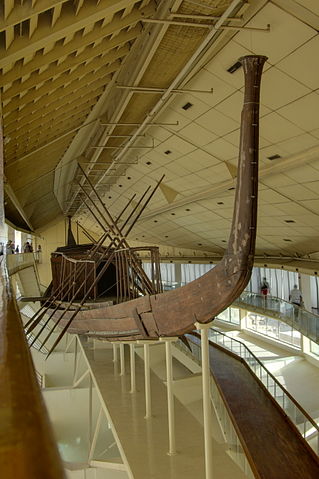
The Phoenician league of independent city-state ports, with others on islands and dotted along many coasts of the Mediterranean Sea, was ideally suited for trade between the Levant area, rich in natural resources, and the rest of the ancient world. Eventually, a number of Phoenician colony cities rose as major maritime powers. The most significant of the independent City-States were Tyre, Sidon, Arwad, Berytus, Byblos and Carthage. The “Phoenician Periphery”, includes Cyprus and South Turkey; Crete; East Sicily; South Sardinia, Ibiza, Southern Spain including Cadiz; and the entire North Coast of Africa anchored by Carthage in today’s Tunisia and Tingris in Morocco on the Atlantic Ocean like Cadiz . These outposts would regularly make the journey to Tyre to worship Melqart in the homeland (The deity Melqart is identified with the hero-god Heracles and rituals signifying a life-death-rebirth deity.) Then as today, Malta and its wonderful natural seaports would have been at the center of this cross Mediterranean traffic. In 2014, the wreck of a Phoenician trading ship leaving Gozo around 700 BC was discovered 120 meters (390 feet) below the surface, providing researchers with the oldest wreck ever found in the central Mediterranean.
The historian Herodotus BC (c. 484–c. 425 BC) said City of Tyre was founded around 2,750 BC (2.44):
In the wish to get the best information that I could on these matters, I made a voyage to Tyre in Phoenicia, hearing there was a temple of Heracles at that place, very highly venerated. I visited the temple and found it richly adorned with a number of offerings, among which were two pillars, one of pure gold, the other of emerald, shining with great brilliance at night. In a conversation which I held with the priests, I inquired how long their temple had been built, and found by their answer that they, too, differed from the Hellenes. They said that the temple was built at the same time that the city was founded and that the foundation of the city took place 2,300 years ago.

He also went and cut down materials of timber out of the mountain called Lebanon, for the roof of temples; and when he had pulled down the ancient temples, he both built the temple of Heracles and that of `Ashtart; and he was the first to celebrate the awakening (egersis) of Heracles in the month Peritius.
According to Josephus, Hiram lived for 53 years and reigned 34. The Hebrew Bible says that Hiram allied himself with David, King of the United Kingdom of Israel and his artisans built David’s palace in Jerusalem after his capture of the city (2 Samuel 5:11, 1 Kings 5:1, 1 Chronicles 14:1). The palace was build using Lebanon Cedar. After David’s death, Hiram maintained his alliance with David’s son and successor Solomon (970 to 931 BCE). The Bible describes Hiram I of Tyre who furnished architects, workmen and cedar timbers for the temple of his ally Solomon at Jerusalem. Rabbinic sources state that the First Temple stood for 410 years from 832 BCE to 422 BCE. It is believed to have been situated where present-day Temple Mount, and Dome of the Rock is situated in today’s old City of Jerusalem. Descriptions of this temple have inspired influenced later structures around the world and the building of the temple is the founding myth for Freemasonry. Kabbalah views the design of the Temple of Solomon as representative of the metaphysical world and the descending light of the creator through Sephirot of the Tree of Life.
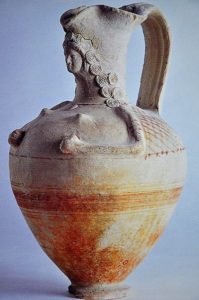
Alexander the Great took Tyre in 332 BC. After the difficult Siege of Tyre, Alexander was exceptionally harsh to Tyre, executing 2,000 of the leading citizens, but he maintained the king in power. He gained control of the other cities peacefully: the ruler of Aradus submitted; the king of Sidon was overthrown. The rise of Macedon gradually ousted the remnants of Phoenicia’s former dominance over the Eastern Mediterranean trade routes. Carthage continued to flourish in North Africa. It oversaw the mining of iron, tin and copper from its secret sources and used its considerable naval power and mercenary armies to protect commercial interests. Rome utterly destroyed it in 146 BC, to complete the end of the third and final Punic Wars fought between 264 BC and 146 BC.

Despite the legend that upon the Arab occupation, Malta was vacated of all its inhabitants around the year AD 869, carrying ‘one and all’ into slavery, leaving no Punic or Latin survivors behind, genetics prove this to be untrue. The groundbreaking National Geographic study indicated that a high percentage of the Y chromosome lineages in today’s Maltese population came in with the Lebanese Phoenicians. Maltese is a Semitic tongue but a unique one among Semitic languages. It is written in the Latin alphabet. Special characters are added to accommodate Semitic sounds that are not available in Latin characters. Regardless of today’s genetic lineage, the Phoenician history from the end of the temple age in 2500 BC to the Roman period is also a history that belongs to the Maltese islands.
To Egypt, where neither grapevines nor strong timber would grow, the Phoenicians sold wine, cedar timbers and much more. Phoenician trade was best known for its a violet-purple dye derived from the shell of the Murex sea-snail. Brilliant textiles were a part of Phoenician wealth, and Phoenician glass beads and ingots was another export ware.
According to the Roman author, Pliny the Elder (AD 23 – 79), glass was first produced by merchants moored on the Lebanese river of Belus, in a marshy district of the lower ridges of Mount Carmelus. These merchants were said to be transporting nitre (potassium nitrate) in their ship. As they were preparing their meal on the beach, the merchants could not find suitable stones for supporting their cauldrons. Therefore, they decided to take some lumps of nitre from their ship for that purpose.
“Upon its being subjected to the action of the fire, in combination with the sand of the sea-shore, they beheld transparent streams flowing forth of a liquid hitherto unknown: this, it is said, was the origin of glass.”
It is thought the techniques and recipes required for the initial fusing of glass from raw materials was a closely guarded technological secret which meant that glass workers relied on imports of pre-formed glass from Punic ships.
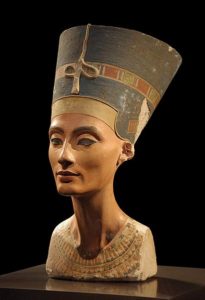
The founding date for Byblos of ca. 6000 B.C. and for Tyre of ca. 2750 B.C. are both well before dates commonly used by historians and academic archaeologists to describe the origin of the Phoenician empire. Lebanese cedar wood was also popular for ancient woodworking and ship construction because it is easily worked and shaped, it seasons with minimal shrinkage or distortion and it resists decay in salt water.
The Phoenicians were famed in antiquity for their ship-building skills, and they were credited with inventing the keel, the battering ram on the bow, and caulking between planks. Early Phoenicians were known as the Canaanites in the bible. The Uluburun is a 1300s B.C. shipwreck discovered in 1982 off the coast of Uluburun (Grand Cape), near Kaş in south-western Turkey with a full cargo of trade goods from nine cultures [4] and a gold scarab engraved with the name of Egyptian Queen Nefertiti (c. 1370 – c. 1330 BC). The 15 meter long ship, made with Lebanese cedar, is the earliest known example of a ship constructed using the advanced mortise and tenon technique, where planks were joined by flat tongues of wood inserted into slots cut into the planks. The Uluburun ship’s cargo consisted mostly of raw materials that were trade items, which before the ship’s discovery were known primarily from ancient texts or Egyptian tomb paintings. The cargo matches many of the royal gifts listed in the Amarna letters of Akhenaten found at El-Amarna, Egypt. Among the cargo of 20,000 different objects were 10 tons of copper and one ton of tin for the making of bronze objects. Analysis of the copper shows an extraordinary purity of 99.5% which means it could only have come from the ancient copper mines located in Northern Michigan on the Great Lakes of America.
While the many artifacts left by the Phoenicians in the Americas are still repressed by tenured historians and archeologists, most agree that the written record shows the 26th Dynasty Egyptian King Necho (610–595 BC) sent out an expedition[5] of Phoenicians, which in three years sailed from the Red Sea around Africa to the mouth of the Nile. Phoenician ship captains had the advantage of not only the best boats but the ability to navigate without any view of land. They could maintain the right direction by observing the Ursa Minor constellation, called by ancient writers the “Phoenician Star” and now known as Polaris or the North Star. The ancient historian Diodorus claimed that the Phoenicians reached the Atlantic islands of Madeira, the Canary Islands, the Azores, and a mountainous land with navigable rivers.
Master Mariners of the Bronze Age
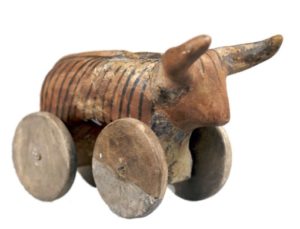
The Mesopotamian Bronze Age began about 3500 BC A 2013 report suggests that the earliest tin-alloy bronze dates to the mid-5th millennium BC in a Vinča culture site in Pločnik on Rudnik mountain in Serbia. The invention of the wheel may have resulted from the hard work of mining in the Carpathian Mountains, around 3600 bce, where mineworkers, exhausted by lugging baskets of copper ore out of tunnels and trenches, put them on a plank fitted with four wooden disks and began rolling them
Phoenicians obtained other materials through mining, perhaps the most lucrative being silver from Sardinia and the Iberian Peninsula. The most important trade good was bronze which made tribes powerful. Tin was required to be smelted with copper to create the durable metal alloy bronze which made the best tools and weapons.Europe has very few sources of tin. Therefore, throughout ancient times tin was imported long distances from the known tin mining districts of antiquity. Tin was scare everywhere in the Mediterranean except around Cornwall in Britain. By putting a small amount of tin (5 – 20%) in molten copper the alloy bronze was produced. The alloy is harder than copper. Exploitation of the tin resources in Britain is believed to have started about 2150 BC,[6] with a thriving tin trade kept secret by the seamen of Gades the Phoenician colony.
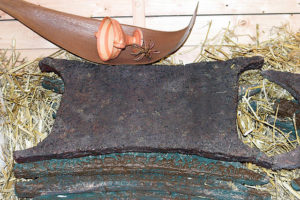
Gades (modern Cadiz) on the Atlantic Coast just outside the Gates of Hercules or Gibraltar was founded by Tyre in the 12th century BC. However, it remains popular for archeologists to debunk the obvious likelihood that the Phoenicians were the primary providers of British tin to Europe. By guarding mine locations and manufacturing formulas the Phoenicians became known for being secretive in business then and archeology today. Our Deep History needs to acknowledge the likelihood of Phoenicians being the traders of Cornwall tin and Michigan copper to the Bronze Age as they controlled the Pillars of Hercules via Cadiz for at least a millennia and perhaps two.
“Here live the men who fit out the most and largest merchant-vessels, both for Our Sea and the outer sea, although, in the first place, it is no large island they live in, and secondly, they do not occupy much of the continent opposite the island, and, thirdly, are not well-off in the possession of other islands; indeed, they live mostly on the sea, though a mere few keep at home or else while away their time at Rome. In population, however, Gades does not fall short, it would seem, of any of the cities except Rome”. [7] Strabo (63 BC – c. 24 AD) describing Gades
The Phoenicians, then, while exploring the coast outside the Pillars for the reasons we have stated and while sailing along the shore of Libya, were driven by strong winds a great distance out into the ocean. And after being storm-tossed for many days they were carried ashore on the island we mentioned above, and when they had observed its felicity and nature they caused it to be known to all men. [8] Diodorus Siculus (A compiling Roman historian writing between 60 and 30 BC) 5

Phoenician art was not distinctive but rather derivative of the great Egyptian and Assyrian Empires that also informed the rise of Greek Civilization. Besides their reputation as merchants, the Carthaginians were known in the ancient world for their superstition and intense religiosity. They imagined themselves living in a world inhabited by supernatural powers which were mostly malevolent. For protection, they carried amulets of various origins and had them buried with them when they died. Canaanite religion was more of a public institution than of an individual experience. Also polygamous like their Hebrew cousins, the Phoenicians were also known for their religion which included some notorious elements such as temple prostitution and child sacrifice. The prominent deity Melqart was a life-death-rebirth deity whose annual birth came in February with the normal ending of the winter rains or our own traditional pre-Lenten Carnaval time. The Greeks and Romans learned to worship Melqart as Hercules. Equally prominent was a consort goddess who was a successor to Mesopotamian’s Ishtar. Ishtar’s holy days were associated with Yule, and it is believed that she created the Evergreen Tree symbol out of her sorrow and love for the annual death of Tammuz. Winter would occur during her annual trip to the underworld to search for Tammuz. Worshiped as Astarte by the Phonecians, Aphrodite in Cyprus, and Tanit in Carthage where as well as being a consort she was also a heavenly goddess of war, a virginal (not married) mother goddess, healer, protector and particularly a symbol of fertility. Eventually, these pairs were succeeded by Isis and Osiris from Egypt who became well-known throughout the Roman civilization.
Archaeoastronomy Supports Deep History
“You never change things by fighting the existing reality. To change something, build a new model that makes the existing model obsolete.” Buckminster Fuller (1895 -1983)
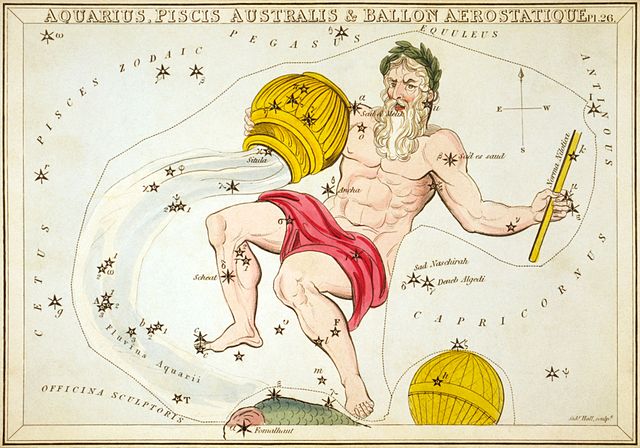
That the ancients, with relatively few diversions to the night sky, would have had a deep and abiding interest in the stars seems evident. Knowing seasonal durations and transitions was vital to success in hunting and planting. Archaeoastronomy draws on many scientific disciplines to decode the ancient meanings contained in writings and structures. Archaeoastronomy’s goal is to understand how skywatchers of the past fashioned and refined systems for regulating their calendars and for memorializing celestial events and the rhythms of the 7 visible planets and night sky.
A key resource in the interdisciplinary field of Archaeoastronomy that uses written and unwritten evidence to study the astronomies of other cultures is Hamlet’s Mill, An Essay on Myth and the Frame of Time (1969) whose premise is that ancient myths have no historical or factual basis other than a cosmological one encoding astronomical phenomena, especially the precession of the equinoxes.[9] This thinking informs Archaeoastronomy and its continued success finding where myth and science join. The shift of the earth sky one degree every 72 years was discovered by the Babylonians or perhaps the Hindus. So a full circle or Great year equals 25,920 [360 degrees x 72 years. When the sky is divided into 12 constellations: (25,920 / 12 = 2,160) The following numbers, can therefore be used to communicate precessionary knowledge in a myth: 12 … 30 … 72 … 360 … 2,160 … 4,320 and 25,920. The ancients learned the patterns of the universe as “sacred geometry” and incorporated this knowledge into their temple building.
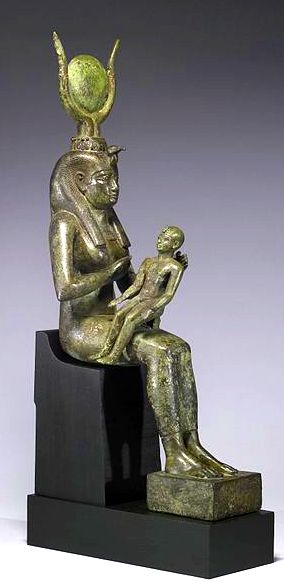
The ancient Egyptian epitaph attributed to Hermes; “As Above So Below” simply illustrates why wisdom seeking groups such as the Freemasons and Kabbalists study the “Sacred Geometry” of Soloman’s Temple built by the Phoenician Hiram Abiff based upon cyclical patterns and ratios of the universe.
Most historians and anthropologists continue to be loyal to a doctrine of cultural isolation that was originally promulgated by a medieval religious conviction that Columbus was chosen by God to bring the first Christian civilization to America. Although the modern scholars abandoned the religious premise of American discovery, they have continued to adhere to the belief that no significant voyagers preceded Columbus to the New World despite an overwhelming amount of evidence which recently added DNA inheritance to its many proofs. However, the increased academic interest in Archaeoastronomy has many believing an important shift may now be within the gates of orthodoxy as the newest Ph.D. Dissertation owners work their way to senior tenures and prestigious research grants.
The Roman Province of Africa was dominated by Punic speaking coastal cities. One of the most important Church Fathers in Western Christianity Saint Augustine of Hippo (354 – 430) did not become a Christian till he was 32 years old and accepted the wisdom of the trinity from the Bishop of Milan. His journey from dualistic Manichaeism to Christianity was deeply impacted by Neoplatonism and its emphasis on mystical contemplation as a means to directly encounter God or the One, found in the writings of Plotinus and Porphyry. Augustine’s formulation of original sin and just war theory are pillars of the church and his books have never gone out of print. When the Western Roman Empire began to disintegrate, Augustine developed the concept of the Church as a spiritual City of God, distinct from the material Earthly City.
“The Golden Ass. The Metamorphoses of Apuleius” is the only Ancient Roman novel in Latin to survive in its entirety which contains the first version of the Cupid and Psyche myth which is better known through today’s “Beauty and the Beast” stories. The author Apuleius (124 – 170) was a prominent Neoplatonist North African author and Roman official. The protagonist Lucius, whose curiosity and fascination for sex and magic results in his transformation into an ass. After suffering a series of trials and humiliations, he is ultimately returned to human shape by the kindness of the goddess Isis. The Goddess Isis has often been called a model for the Virgin Mary and this story remains one of the richest testaments to that ancient cult of Isis in all literature. The story ultimately is a book about religious conversion and thus likely influenced Augustine’s classic “Confessions.”
The 1968 classic bestseller, Chariots of the Gods, by Erich von Däniken proposed that these “ruts could only be made with alien influence.” Best selling author Graham Hancock, in his book, “Underworld: The Mysterious Origins of Civilization,” claims the ruts as potential evidence of a higher civilization living there before a cataclysmic event. The cart ruts leading into the sea have led to the theory that Malta is actually an existing part of the legendary lost city of Atlantis that existed prior to its destruction. Hancock has been at the forefront of the challenge to orthodoxy but has a more urgent message these days.”We have fallen out of harmony with the universe… In mythological terms, we tick all the boxes for the next lost civilization,” warns Hancock. “Plato says it very clearly about the citizens of Atlantis: there was a time when they loved a pure and good life but they became arrogant and cruel and no longer bore their prosperity with moderation. I think we sound a lot like that.” [10]
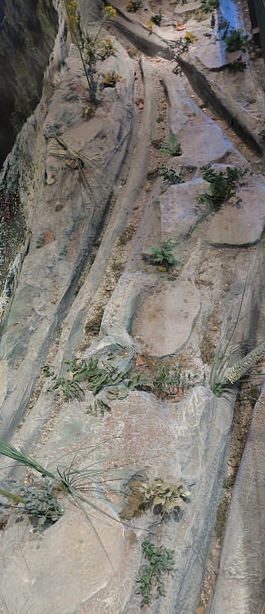
More than 30 stone temple complexes as well as other ancient structures on the Maltese island were dated to have been built from 5500 to 2500 BC, making them some of the oldest free-standing monuments on the planet. The megalithic temple builders left us the wonders at Hagar Qim and Mnajdra in Malta, and Ġgantija temples in Gozo. Temples exhibit a cloverleaf (trefoil) floor plan. Their typical architectural elements include a dome roof and the horizontal arch, or post-and-lintel trilithon and used animal skins as ceilings and doors. A mother goddess or abundant fertility god was the dominant deity and the temples were sites of animal sacrifice. At around 2500 BC, this advanced, temple building society vanished from Malta and was succeeded by new settlers including some who brought stones from nearby Sicily. This transition marks the beginning of Malta’s Bronze Age and the use of cremation to bury their dead.
Malta contains the world’s largest collection of “cart ruts’ that run in pairs cut/worn into limestone rock with a ‘standard’ gauge of around 1.4m from 52 to 58 inches apart”. In Malta itself, there are potentially as many as 150 sites that have cart ruts, including the ones found in St. Paul’s Bay, Naxxar, San Gwann and Bidnija.The most well-known site in the archipelago is the Misrah Ghar il-Kbir, which is more popularly referred to as the “Clapham Junction.” Archeologists continue to argue if the carts indicate the existence of wheels. Wheels first appeared in Europe by 2500 BC, and wheeled sledges existed in Mesopotamia by 3200 BC
Some Maltese researchers have dated their “roads” to circa 4,000 – 5,000 BC however, Maltese archaeologist Anthony Bonanno theorizes that the ruts are Phoenician constructions, Elsewhere in the Mediterranean, cart ruts are usually associated with quarrying, serving as railways of the ancient world. Bonanno believes the network of tracks was used for the exportation of quarried stones to North Africa and ruts may have been caused by wooden-wheeled carts eroding soft limestone. Bonanno noted: “In my search and study of ancient quarries over the last fifteen years, I found cart ruts very frequently, almost invariably, associated with them. The best example is, perhaps, the Buskett group which lies next to the largest and most important of Malta’s ancient quarries. For this reason, I cannot refrain from believing that they were intended for the transportation of construction blocks from the quarry face to the road in ancient (i.e., not prehistoric) times.” [11]
Meanwhile, copper extraction from Isle Royal in Northern Michigan began as early as 6000 BC with smelting known to exist from 4000 BC onward. As many as 10,000 people at one time worked the mines but abruptly ended that about 1200 BC, during a time of great wars in the Mediterranean before starting up more modestly. ” [12] . Orthodox history attributes this massive copper mining on the Great Lakes to a local native population whose legends say the miners were light-skinned people from afar. The operators of the Cornish tin mines in Britain acknowledged as main supply of tin to the Mediterranean from 2150 BC onward remains unnamed as to do so would violate the orthodoxy that Columbus was the first European to land in the Americas. The seafaring Phoenicians established their two main cities of Byblos and Tyre in Lebanon between 6000 BC and 2750 BC yet orthodox history and archaeology consider their time to begin between 1600 and 1200 BC. [13]
Carnival cultures serve many purposes including preservation of the culture through the mysterious power of song and dance to tap deep levels of the collective unconscious. Let’s hope the Maltese tourist economy with a strong history component has only scratched the surface of its ancient mariner culture.
Sources:
- http://listverse.com/2017/02/14/top-10-mysteries-of-the-phoenicians/
- http://listverse.com/2014/06/25/10-civilizations-that-might-have-beaten-columbus-to-america/
- https://en.wikipedia.org/wiki/Theory_of_Phoenician_discovery_of_the_Americas
- https://en.wikipedia.org/wiki/Carthaginian_coins_of_Corvo
- https://en.wikipedia.org/wiki/Archaeoastronomy
- “Clearly these wide discrepancies [Phoenician historical achievment]—not just of time but of understanding—need to be addressed” https://phoenicia.org/datingchronology.html Founded in July 2009, Salim Khalaf operates the largest compilation of Phoenician, Punic and Canaanite studies on the web.
- Early Precession Work predating Hipparchus (190 – c. 120 bc) who orthodox academia credits with discovery of Precession of the equinoxes (Axial precession) https://en.wikipedia.org/wiki/Berossus Using ancient Babylonian records and texts that are lost to us, Berossus published the Babyloniaca (hereafter, History of Babylonia) in three books sometime around 290–278 BC, A statue in Athens attested to the knowledge he imparted. Also, ancient Hindu scriptures in India describe the phenomenon of the cycle of the changing night sky https://swarajyamag.com/science/contribution-of-hindu-scriptures-to-archaeoastronomy
- Gulf Stream -easy ship transport across the Atlantic Ocean There has long existed a great, broad ocean current that sweeps southward from thelberian Peninsula (Spain and Portugal) along the coast of western Africa then veers westward into the Atlantic in a great arc that strikes the New World at about the West Indies (see map). Then this same current—now called the Gulf Stream—swings around, passes Florida, and arches northward in another great sweep called the North Atlantic Drift, returns to Europe. By carrying warm water northeast across the Atlantic, it makes Northern Europe warmer than it otherwise would be.[8] However global warming is having an unclear impact on the Gulf Stream which transports more water than “all the world’s rivers combined”. [8] https://www.ancient.eu/article/897/the-phoenicians—master-mariners/
- Phoenician Global Mining Connection from Michigan to Cornwall : “Apparently, one instance of identification by silver inclusion has occurred overseas: In this letter of December 1st, 1995, Palden Jenkins, a historian from Glastonbury, writes, “I met the farmer who owns the land on which a megalithic stone circle is, called Merry Maidens, in far west Cornwall. While clearing hedges, he discovered an arrowhead, which was sent to the British Museum for identification. The answer returned: ‘5,000 years old; source, Michigan, USA’.” (Ref.76).https://grahamhancock.com/wakefieldjs1/
- Transport of the Michigan Copper was down the Mississippi: “the Mined Poverty Point earthworks in Louisiana are the earliest and largest monuments in prehistoric North America. The site that remains covers a square mile, features six concentric segmented semi-circular walls, surrounded by six large mounds. The site is shown to be a prehistoric town, and a manufacturing and trading center which was a part of the worldwide megalithic culture. The site design reveals encoded latitudes of transatlantic sailing routes, and evidence of multicultural involvement in the manufacturing of copper oxhide ingots.” http://ancientamerica.com/poverty-point-the-manufacturing-of-copper-oxhides-for-the-atlantic-copper-trade/
- “Truth must be our guiding light because history sets the very tone and direction of our society, and only a truthful society can effectively meet the challenges that lie ahead.” — Gunnar Thompson As quoted by January 2, 2015 by Carl Lehrburger author of American Discovery Secrets of Ancient America: Archaeoastronomy and the Legacy of the Phoenicians, Celts, and Other Forgotten Explorers

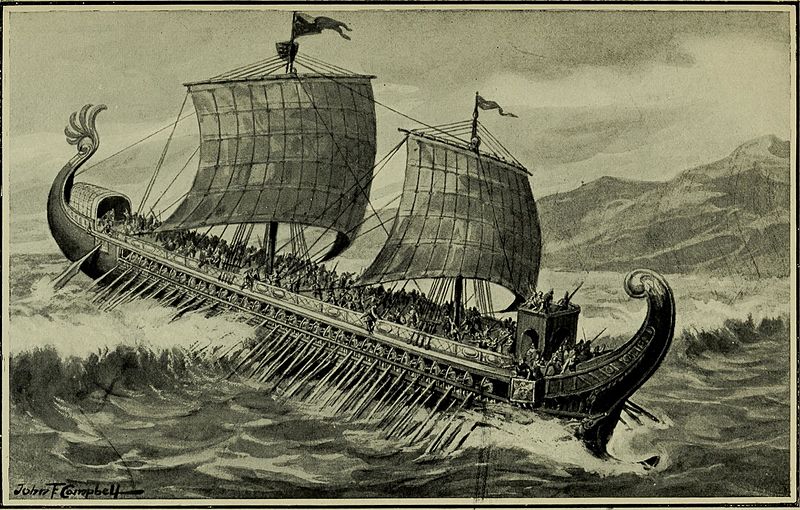
0 comments